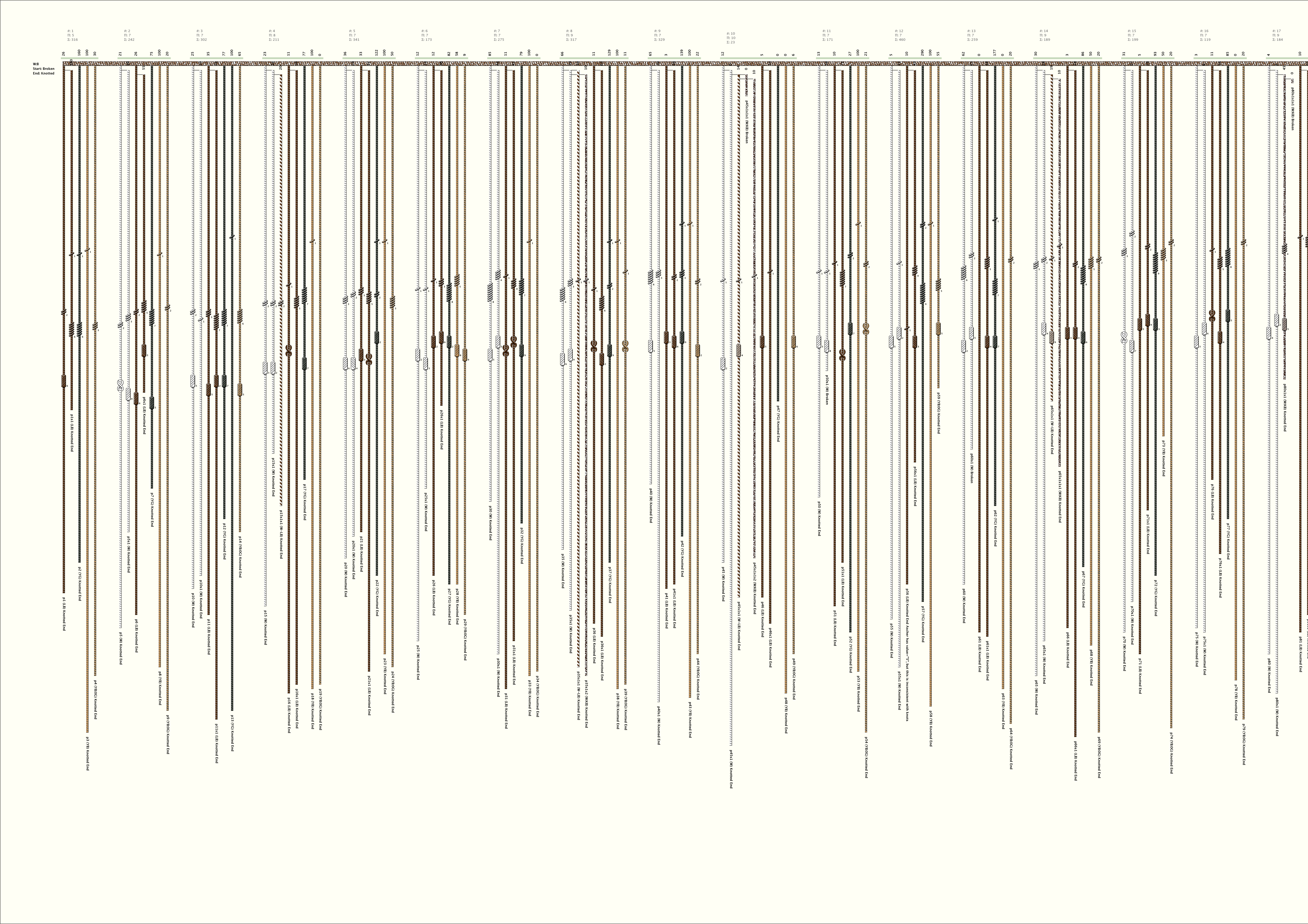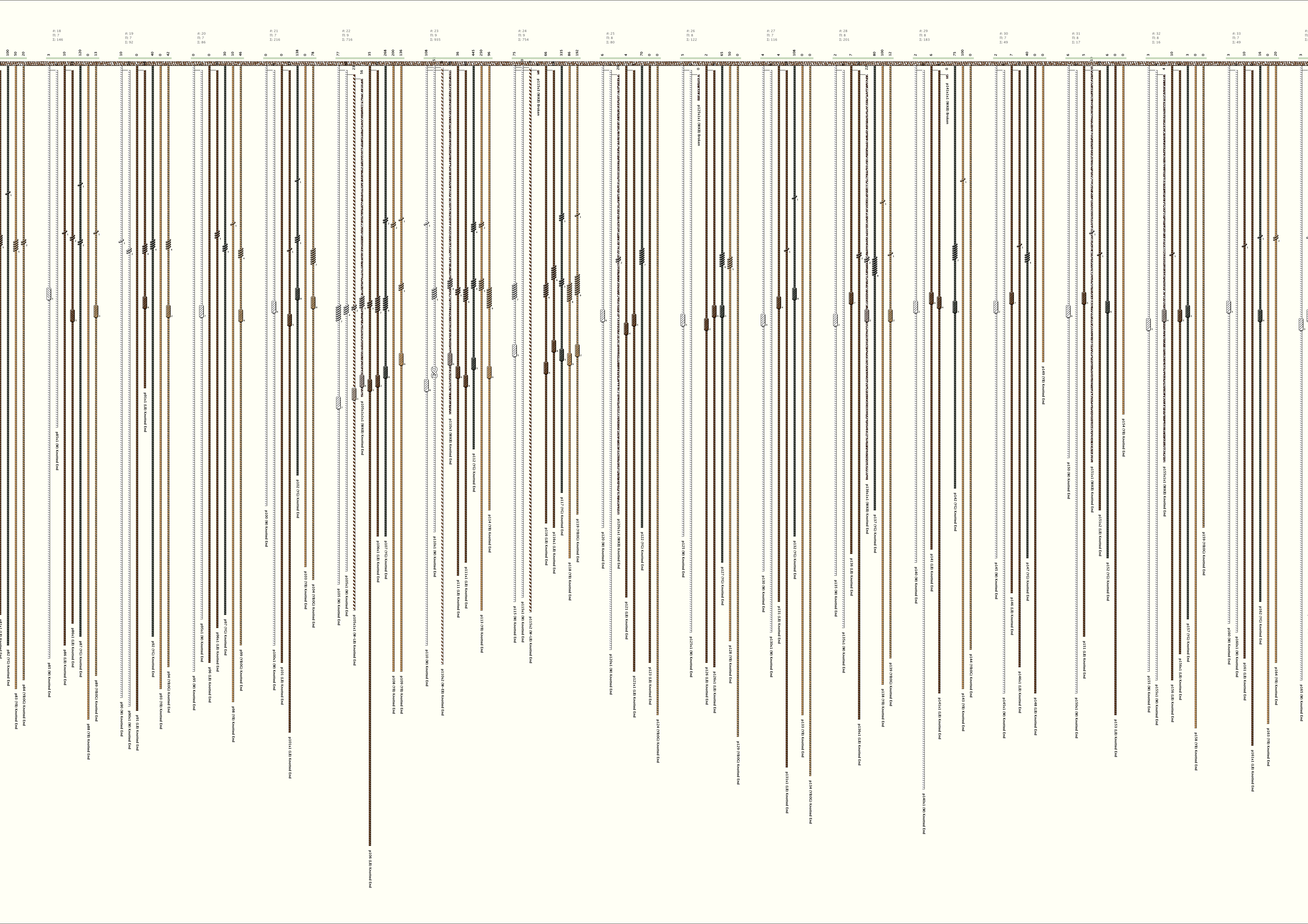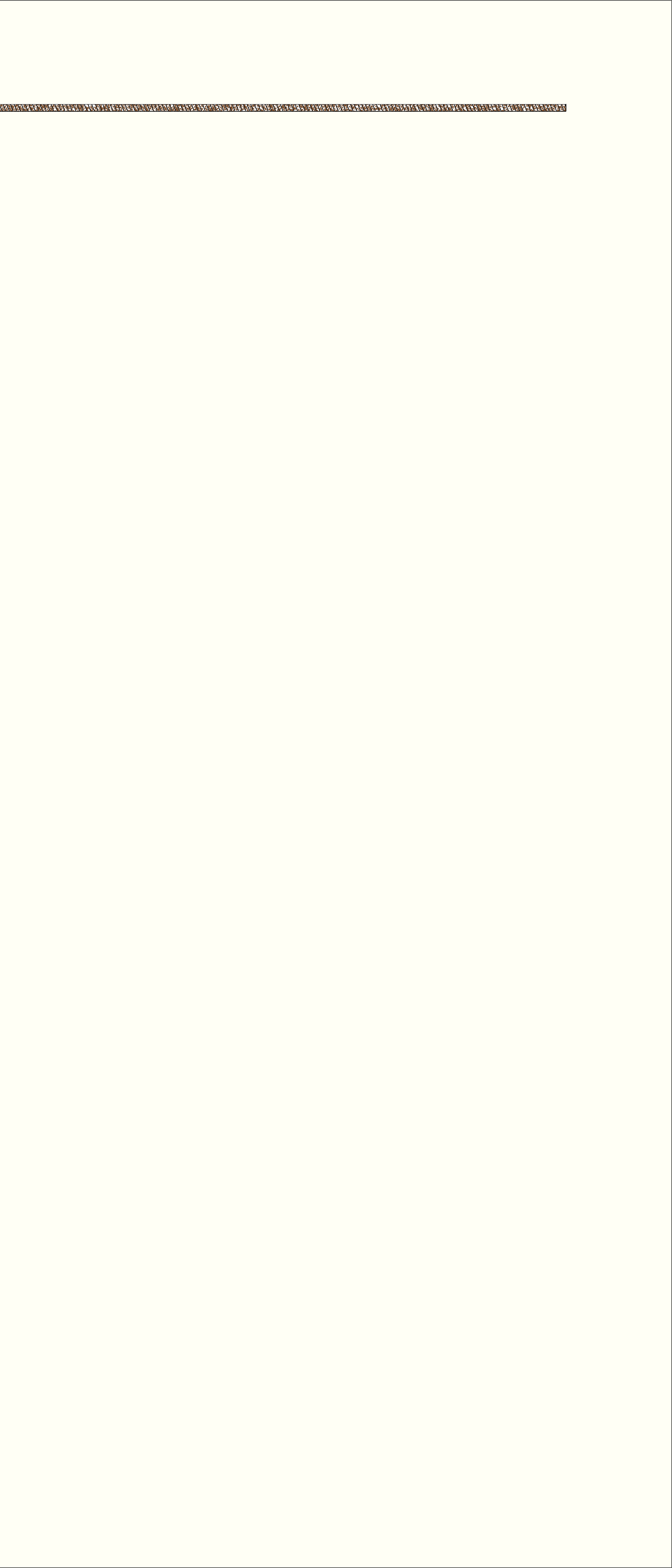UR1175/KH0192
|
Original Name: AS175 Original Author: Marcia & Robert Ascher Museum: Museum für Völkerkunde, Museum Number: VA42518 Provenance: Pachacamac Region: Unknown |
Total Number of Cords: 338 Number of Ascher Cord Colors: 10 Similar Khipu: Previous (UR1152) Next (UR1126) Catalog: UR1175 Khipu Notes: Khipu Notes |
Use ⌘ + or ⌘ – to Zoom In or Out








Khipu Notes
Ascher Databook Notes:
- This is one of several khipus acquired by the Museum in 1907 with provenance Pachacamac. For a list of them, see UR1097.
- By spacing, the khipu is separated into 45 groups of 5 pendants each. There is a larger space after every 3rd group and a still larger space between the 21st and 22nd groups and the 24th and 25th groups. Thus, the khipu is in 3 parts: part 1 is 7 sets of 3 groups each; part 2 is 1 set of 3 groups; and part 3 is 7 sets of 3 groups.
- All groups in part 1 have the same color pattern: W (with a W subsidiary); LB (with an LB subsidiary); YG; YB; YB: 0G. Groups in parts 2 and 3 have the same pattern for the first 3 pendant positions and then vary in one or both of the last 2 positions. Calling the colors in the part 1 pattern C1-C5, the color patterns are summarized in Table 1.
TABLE 1
Part 1 (groups 1-21) C1 C2 C3 C4 C5 Part 2 (groups 1-3) C1 C2 C3 C4 C4 Part 3 (groups 1-5) C1 C2 C3 C2 C5 Part 3 (groups 6-8) C1 C2 C3 C2 C4 Part 3 (groups 9-21) C1 C2 C3 C4 C4
In all groups, there is at least one subsidiary on pendants 1 and 2 (a W and an LB respectively) and no subsidiaries on the other positions. Additional subsidiaries on the first 2 positions are, with one exception, KB:W or LB-W.
- In parts 1 and 3, many values are repeated in the same position in consecutive groups or in the same position 2 groups later. The former can be represented as:,
Pij= Pi+1,j and the latter as Pij = Pi+2,jIn part 1, these hold in 20 and 12 places respectively; in part 2 in no places; and in part 3 in 27 and 18 places.
- The values in part 2 are related to the sums of values in part 3. Position by position, values in group 1 of part 2 are related to the sums of values in the first groups in each of the 7 sets in part 3; group 2 values are related to sums of values in the second groups of each of the sets; and group 3 values to the sums of values of the third group. That is:
\[ P_{2ij}= \sum\limits_{k=0}^{6} P_{3,3k+i,j}\;\;\;for\;j=(1,2,...5),\;\; i=(1,2,3) \]This represents 15 sums and 105 values being summed. Of the 15 values in part 2, 8 are exactly these sums (or off by 1 in 1 digit); 5 are exact sums of only some of the 7 pendants:
Example: P211 = P341 + P3,10,1 + P3,13,1 + P3,16,1 + P3,19,1 thus omitting P311 and P371
and 2 are less than the sums but cannot be associated with a specific subset of the 7 pendants. (Note that the main cord is broken and so there could have been another part prior to part 1 that summed its values.